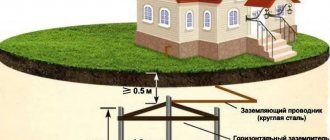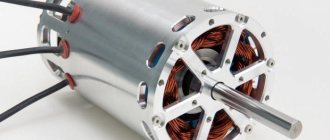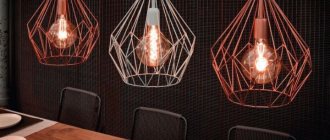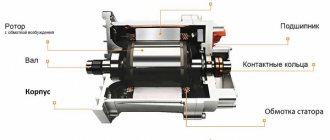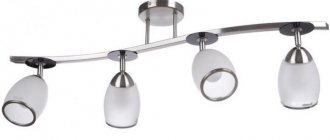Home » Heating » Heating installation » Which greenhouse heating to choose?
Today, greenhouse heating is a fairly important element. It is best to organize electric heating in a greenhouse. With its help, you can control heaters in semi-automatic mode.
Electric heaters for greenhouses are quite economical. In this article you will find the most effective schemes for heating a greenhouse with electricity. For electric heating of a greenhouse, you can use several heater options. A simple heating method can be considered by laying a heating cable in the greenhouse. An alternative heating option can be the connection of infrared heaters. The most labor-intensive option can be considered connecting an electric boiler in a greenhouse. Now we can examine each of these systems in detail.
Rating of heaters for greenhouses
You can heat a greenhouse in different ways. When compiling the rating, our team studied the main options for heating rooms, from primitive and low-cost to technically complex and expensive. Each of them has its own advantages and disadvantages. Water heating, heat guns, electric panels and infrared emitters - all of the heating methods listed have their own characteristics, advantages and disadvantages.
Some are highly effective, but their implementation is associated with serious costs of labor and material resources, and they will pay for themselves only in reputable and profitable farms. Others do not require special material costs, can be installed within a few hours, but are ineffective and consume a significant amount of energy resources. Our task is to select inexpensive, effective and economical devices that do not require complex installation and the constant presence of the owner during operation, such as when using a potbelly stove.
When selecting nominees for the rating, our experts paid special attention to the following characteristics and functions of the devices:
- Model sizes. The heater should not clutter up the work space;
- Weight. Lightweight greenhouse structures will not withstand heavy equipment;
- Power. It should be enough to effectively heat the soil and plants;
- Cost-effective – The model must provide the desired effect with minimal costs;
- Autonomy. Preference was given to devices whose operation can be programmed to automatically maintain a set temperature in the room around the clock.
- Price. Nominees with the best price-quality ratio were selected;
- Safety. Models that meet all electrical safety requirements were selected.
A team of experts took part in compiling the rating, which included experienced gardeners who have been using heaters of various designs for many years, electricians with extensive experience, and sales consultants in specialized stores. Considering their competence and high level of professionalism, we can confidently recommend any of the seven nominees presented to customers.
Solar method of heating a greenhouse in winter and early spring
The easiest and most natural way is with the help of the sun. To use the energy of the celestial body to the maximum, the greenhouse should be placed in the place where the most sunlight reaches - this way the plants will receive the maximum amount of heat and light.
Gardeners have experimentally found that a greenhouse in the shape of an arch or hemisphere heats up best in the sun.
For solar heating to work effectively, the roof of the greenhouse must be completely transparent. Then the sun's rays will be able to freely pass inside and heat the plants and soil, which will give off heat, thereby heating the air in the greenhouse.
The undoubted advantages of the solar heating method are efficiency and environmental friendliness, but a significant disadvantage is the fact that this option is not suitable for northern regions.
How to choose a heater for a greenhouse
Every summer resident and farmer wants to get high yields with a minimum of costs, i.e. get not only satisfaction from classes, but also benefits. Based on these considerations, buyers choose devices that can automatically maintain air and soil temperatures that are comfortable for plants, use energy economically, and are affordable. Let's consider the main selection criteria:
Heater type
The air and soil in the greenhouse are heated by different types of devices, namely:
- Electrical;
- Gas;
- Cable;
- Oily;
- Infrared film;
- Infrared ceiling.
Fan heaters deserve special mention. They quickly reach the set temperature in the room, but the air becomes too dry and the heat is distributed unevenly. Electric, oil and gas ones “eat up” a lot of electricity and only heat the space around them. The air also loses moisture. Infrared emitters with a thermostat for a greenhouse have been and remain the best option for a summer residence. They are effective, economical, can operate automatically, and maintain normal air humidity.
Of the ground heaters, the most budget-friendly and effective option would be heating cables. The advantages are the same as those of infrared ceiling devices; labor costs during installation are much less than with water heating. The cost of IR emitters and strip ground heaters is approximately comparable and is quite affordable for the average buyer.
Power
Calculations have established that for effective heating of one square meter of greenhouse area, 70-100 W of the device’s power consumption is sufficient. More powerful devices reduce the percentage of air and soil humidity, and this is harmful to the development of plants. The user just has to determine the area occupied by plants and multiply the resulting number by 100 if the shelter is film.
A greenhouse heater made of polycarbonate or double glazing may be less powerful. In such rooms, effective heating can be achieved with 70 W per square meter of area. It remains to clarify the power of the device and calculate how many of them will be needed to achieve the expected effect. In order to comply with electrical safety requirements, it is better to entrust the calculation of the cross-section and installation of electrical wiring to a specialist.
Economical
This indicator is closely related to the efficiency of the heater. It would be more accurate to call this indicator energy efficiency. The most effective in this sense are devices powered by thermostats. The desired temperature level is maintained constantly and without user intervention. The device periodically turns off and turns on automatically based on a signal from the built-in sensor. Energy savings reach 60% compared to unregulated devices.
Can I use infrared heating?
IR radiation does not pose any danger. Such rays come from any heated body - the sun, stove, heating radiator. The advantage of IR heating is the absence of an intermediary, which is air in other systems: plants receive heat directly.
Heat loss, accordingly, is reduced (in other systems, heat is carried away by air to the ceiling), so IR heating can be considered the most economical.
Which heater is best for a greenhouse?
For those who, after reading our review, still haven’t decided which model to buy, we advise you to listen to the recommendations of our experts. Having analyzed the characteristics and functionality of the nominees, and taking into account the nature of customer reviews, we have compiled a rating of the best samples:
- Almak IK-5. Infrared heater for a greenhouse made of polycarbonate or film greenhouse. Compact, lightweight, with a power of 500W, it is able to raise and maintain a temperature that is comfortable for seedlings and adult crops. By investing in the purchase of a thermostat, the user will be able to program the device to operate autonomously by day and time of the week. The device is safe to use and very economical.
- Timberk TCH A03 1000. Infrared ceiling heater from a Scandinavian brand. Designed for heating rooms with an area of 10/12 m2. The radial surface and adjustable heat dissipation angle make it a very efficient heating device. Complete with a Terneo Pro thermostat, it can regulate the operating mode automatically in the desired temperature range.
- StopMorozAgro. Flat heating cable for heating the soil of a greenhouse. Length 12m, power 400 W. Equipped with a built-in thermostat. Maintains a comfortable soil temperature for the plant root system automatically.
- Chuvashteplokabel SNGT-3.0. Ground heater 23 meters long, power 345 W. Equipped with a built-in thermostat. Automatically maintains the temperature of fertile soil in the range from 18 to 24°C. Heating area – up to 4m2. Reliable, electrically safe, economical.
The editors of the site hope that the presented review will help gardeners find a suitable heater for their greenhouse and not make mistakes when choosing.
Underfloor heating system
Installation of heated floors
An ideal option for heating the soil in a greenhouse is also a heated floor system. After all, for successful plant growth, it is the roots that need to be warmed up.
Since heating a greenhouse with electric heating elements will cost a lot of money, it is better to install a stove or boiler in it. The heating system can be combined by installing radiators around the perimeter.
- It is better to use polyethylene pipes to heat the greenhouse. They are buried to a depth of about 40-50 cm in the drainage - a layer of crushed stone and sand
- It is not advisable to use metal-plastic for laying in the ground. After all, its fittings (connecting elements) require regular tightening. If you still decide to use such hard plastic, use compensation loops when laying the pipeline
- The first to be laid is a polyethylene film , which serves as waterproofing.
- Next, a layer of thermal insulation made of polystyrene foam or expanded polystyrene
- You can also reduce the thermal conductivity of the soil using compacted sand , which is poured over the heat-insulating layer to a height of 10-15 cm
- The distance between the pipelines should be 0.36 m. To ensure uniform heating, 2 collectors are placed along the edges of the greenhouse. Pipes are connected to them alternately
- To protect the pipeline from damage when digging the soil with a shovel or pitchfork, slate or metal mesh is laid on top of it
- The next 35-40 cm layer is fertile soil
Features of using the oven
Long-burning stoves are an improved version of the Russian stove, economically consuming a wide variety of solid fuels (firewood, old furniture, sawdust, pine cones, various garbage, coal). They were actively used during the Civil War and the Great Patriotic War, when even ordinary firewood was in short supply and boiler houses were idle.
In them, the fuel burns from top to bottom, and as it burns out, the fire sinks lower and lower. This increases the burning time and releases more heat. The fuel in such furnaces slowly smolders at high temperatures and burns out to the end (pyrolysis). This process is regulated by the supply of air through a vent or blower.
Did you know? Americans attribute the invention of the potbelly stove to the famous American politician Benjamin Franklin. In the USA, such stoves are called “fat bellies”.
At the beginning of work, the stove is heated well. Otherwise, the combustion process may stop. The chimney in these structures must be straight and have no bends, since it will need to be periodically cleaned of soot, and it must be accessible for such work.
Such devices should be used when constant control is possible, because firewood needs to be periodically added to them. It is good to make a foundation for them and cover them with brickwork.
The stove should not be placed close to flammable or unprepared materials, since metal parts become very hot and can cause ignition. The firewood used should not be damp.
Owners' opinion
If you look at the reviews of owners of warm beds, you can see a truly rosy picture. A larger number of authors argue that growing seedlings in warm beds, and even in greenhouses, only has a better effect on the harvest. Those who use organic warm beds claim that in any climatic conditions the yield increases several times. They note the ease of formation of such beds, the possibility of early planting of seedlings and, accordingly, earlier harvesting. Many also point to the cost-effectiveness and durability of this method. On any site there will always be the ingredients to create this type of beds. And even a woman can build it with her own hands.
Owners of electric heated beds point to the ease of installation if you follow the instructions exactly, and the durability of such a structure. The only downside is that you can’t find such a system in stores everywhere. Some users order installation kits online. Increased productivity, early fruit ripening and full automation of this method are noted if you install a thermostat.
Many gardeners prefer the water method of heating beds. Among the advantages, in addition to high yield and early ripening, is the possibility of self-assembly of this type of heating. Any man is able to install pipes of the required size and diameter, connect a water pump and install a furnace to heat water. In addition, this method, as the authors note, is more economical than electrically heated beds.
Where can I buy
There are many options. These are construction stores, specialized trading platforms for gardeners and summer residents, or stores selling electrical appliances and equipment. At any of these points the product can be seen and touched. In addition, a face-to-face purchase allows you to avoid purchasing a counterfeit. It's easy to calculate. Electrical appliances are always sold with a warranty period, during which service centers will repair the faulty device free of charge. "Left" companies do not provide guarantees for their products.
If for some reason this option does not suit you, you can always order the product online in an online store.
Basic material execution:
• condenser body – carbon steel of ordinary quality;
• heat exchanger (except for fins of heat-transfer elements) – corrosion-resistant steel; • fins of heat-transfer elements – aluminum. Condensers can be manufactured with a housing made of corrosion-resistant steel. Paintwork:
• outer surface of the housing and heat exchanger – heat-resistant enamel, silver-gray; • the inner surface of the case is chemical-resistant paint or its equivalent.
Draw your attention to:
• smoke exhauster, thermal insulation, instrumentation and control systems must be selected individually during design; • condensers may not have a bypass channel (if necessary, a bypass channel can be introduced into the design); • when installing the condenser, the “legs” are height adjustable; • at the customer's request, it is possible to change the material design of the condenser.
Variations on an aerial theme
We have decided on heating the soil, now we need to choose a method of heating the air, that is, in fact, a heating option. Let's focus on two:
The classic option: do-it-yourself heating of greenhouses with registers around the entire perimeter, completely welded from thick-walled pipes of fairly large diameter. The problem is in the material itself, which has recently become seriously more expensive, and the problem is in a normal welder who will weld all the seams beautifully (in the sense of hermetically sealed and for a long time). It will work out anyway – not with your own hands.
Pipes around the perimeter
In general, it doesn’t matter which batteries are installed, because they will all have approximately the same efficiency. When installing greenhouse heating with your own hands, keep in mind that the maximum coolant pressure will be no more than 1.5 bar, while almost any battery is designed to withstand a pressure of 5-6 bar. You don't have to worry too much about the strength of the connections. At least there is no need to paint the carvings.
Pipe question
Much attention must be paid to the piping system so as not to spend more than is required for the normal functioning of the equipment. If you are installing radiators, there is no point in running expensive metal pipes from the boiler to the radiators; you can get by with unstacked polypropylene
- Firstly, it's cheaper.
- Secondly, polypropylene pipes do not corrode.
- Plastic can withstand “defrosting the system” well when we “overlooked” and created an emergency situation. The ice that forms in the pipes during “defrosting” will not tear the polypropylene, while the metal will fail not only in the joints, but also in the seams, if the pipes are seamed. If they are seamless, so much the worse: the gap will be in the most unexpected place.
- Polypropylene is an excellent heat insulator, so the coolant will not lose temperature as it approaches the radiator.
Bottom wiring is preferable, especially during installation - the issue of convenience of attaching pipes is resolved. Especially if the radiators are not mounted on flimsy polycarbonate walls, but are installed directly on the foundation with bottom mounting.
Heating system with polypropylene pipes
At the entrance to the radiators, it is advisable to equip the pipes with ball valves or thermal valves in order to regulate the temperature in different parts of your huge greenhouse for specific plants.
Possible problems with a homemade device
- The most common problems when operating a homemade heating unit are:
- uneven heating of the internal space;
- excessive dry air.
Both factors negatively affect the condition of the plants in the greenhouse, so you should be especially careful when laying air pipes and providing additional air humidification. Undoubtedly, the selection and installation of technically complex, expensive equipment requires a considerable amount of time and effort to study the issue. However, these efforts can be attributed to a prolonged investment in a future rich harvest, which will delight you both morally and materially for more than one season.
Backup heat sources
shutdowns or breakdowns of boilers with a combined heating method
For example, in addition to electricity, use heating with wood or coal. This will help avoid unforeseen circumstances and prevent the plants from freezing. In addition to, say, a gas boiler, you can also build a brick stove in case of possible failures. In addition, for emergency heating of the greenhouse in the event of a failure of any heating method, you can light a fire in a metal barrel, and place the barrel itself near the greenhouse, directing the heat into a pipe that goes outside. You can also use gas burners to quickly heat up the greenhouse. However, it is not advisable to use them for a long time, since gas is not the best for plants.
Biofuel is also used as additional heating. In areas with cold winters, it is really only used as an additional source of heat. For biofuel, horse manure, fallen leaves with pig or cow waste, undecomposed peat, and urea are most often taken. You can also use vegetable waste mixed with garbage. When this mixture rots, carbon dioxide is released, which warms and nourishes the plants.
There are craftsmen who use unconventional heating methods, for example, a solar oven. To do this, special containers with stones are installed near the roof. Throughout the day, the sun, through glass or film, heats the air in the greenhouse. It rises up and lingers on the stones, heating them. Then the stones give off heat and heat the air in the greenhouse.
On particularly cold nights, greenhouses require additional insulation. To do this, you can use foam, bubble wrap, or, say, burlap or carpet to cover the walls or roof. You can insulate both from the inside and outside. However, you must remember to remove opaque materials during the day so that the plants do not suffer from insufficient lighting. It would also be a good idea to install an alarm device that would give a signal in the event of a critical drop in temperature.
About alternatives
There are, of course, alternatives:
Use other, less expensive types of fuel. If you have a resource base, solid fuels will be the cheapest: firewood, coal. Pellets make sense only if the plant for their production is located nearby. They are inexpensive, unlike other types of solid fuel, they allow you to fully automate the combustion process, but due to their low volumetric weight, delivery costs a pretty penny. The winning option is to find a source of supply of used technical oils. Natural gas is convenient and relatively inexpensive, but it looks like your yard is not gasified. Liquefied gas is unprofitable, especially taking into account the installation of a gas tank. Heating with petroleum heating oil (oil) is on the verge of profitability. Diesel fuel will definitely not pay for itself; you will end up at a serious disadvantage.
A wood stove is a troublesome, but the cheapest and most effective way to heat a greenhouse. For a more even distribution of heat, there is a fan nearby
Use renewable heat sources. A heat pump is unlikely to justify itself; operation is extremely cheap, but the equipment itself is very expensive. In many European countries, the state subsidizes such installations; we do not have such a practice.
Heat pump - environmentally friendly, economical to operate, but very expensive to install
It makes sense to pay attention to the heating system of Ivanov’s vegetarian garden, which you can read about in the series of popular science books “Smart Garden” by Kurdyumov or on his website: https://kurdyumov.ru/knigi/teplica/teplica08.php. This cannot be said to be very effective, but still some kind of savings
Setting up a small greenhouse using all the elements of Ivanov’s solar vegetarian plant hardly makes sense. Solar panels and automatic gate control are unlikely to pay for themselves. But the location of the greenhouse on the southern slope, the blank insulated northern wall and the ground heat exchanger are sound ideas. And the gates can be turned manually. Thanks to the constant movement of air, the flow of which is created by fans, heat is accumulated in the ground during the day, and energy is released back at night. This solution will not increase the average daily temperature in the greenhouse, but will help level out the difference between daytime and nighttime temperatures. You can also use containers filled with stones or water as a heat exchanger
Ivanov's vegetarian device
If the greenhouse has not yet been built, it is worth using rational construction solutions that reduce heat loss and allow for more efficient use of solar radiation: correctly orient the greenhouse towards the sunny side; attach it to the south side of the house; make the northern side blank, insulate it well and line the inside with reflective material, foil; partially buried in the ground; provide for the possibility of installing an additional layer of greenhouse film during the cold period, etc.
A set of simple measures used during construction will reduce greenhouse heating costs by 1.5-2 times
Partial (0.5-1.5 m) deepening of the greenhouse into the ground is justified. Sunlight penetrates in sufficient quantities through the roof, the walls should be well insulated and lined with foil
The photo clearly shows additional rolls of film rolled up to the ridge of the greenhouse, which are unrolled in cold weather.
Use traditional methods of heating greenhouses, for example, a mixture of manure and straw laid in the fall lasts all winter, releasing a lot of heat.
Heating with gas
Infrared burner
The disadvantages of such heating include the need for mandatory coordination with special services. Moreover, you will not be able to provide gas heating for the greenhouse - the design and installation of such systems is carried out only by specialists. Due to the high risk of ignition during operation, the operation of gas boilers will need to be constantly monitored. Due to the excess carbon monoxide generated during fuel combustion, ventilation .
But still, such devices have much more advantages. The cost of gas is not that high. You will only have to spend money on purchasing a boiler and equipment for it. Such designs ensure uniformity and rapid heating of the greenhouse, plus they are as easy as possible to maintain. But in order for it to heat up evenly, it is better to install heaters or connect several burners at once.
We list the main types of gas equipment used for heating greenhouses:
- convectors: industry produces special devices of this type specifically for heating greenhouses; built-in heat exchanger distributes heat evenly throughout the room; ventilation in it is provided using a coaxial (pipe in pipe) chimney
- heater with two open burners (the second of them serves as a spare) and a vertical chimney; the ventilation system is installed separately
- burners with infrared radiation: they are located in separate zones for local heating of certain types of crops or accelerating seed germination; equipped with a smoke exhauster that throws combustion products into the chimney; their operation does not require the installation of forced ventilation systems - natural is sufficient
In most cases, gas heating in greenhouses is combined with water heating . The principle of its arrangement is similar to that described above.
Heat gas gun
Heat gas gunsused for spot heating can be easily connected to both a gas main and a cylinder. Such structures are light in weight and quite mobile; they can easily be moved to any other place. The fuel in them burns completely, so the risk of carbon monoxide poisoning during their operation is minimal. Modern gas-fired heat guns are equipped with a temperature and even humidity control system.
About agricultural economics
Heating a greenhouse with electricity is by no means a cheap thing. Such solutions are not used in the agro-industrial sector; they are unprofitable. You are not the first to come up with such an idea, but if you are interested in the economic side of the issue, calculate the costs and compare with the possible benefits. All your predecessors abandoned the idea of heating greenhouses with electricity; it is much cheaper to buy vegetables and fruits.
For comparison - a comparison of the cost of installing heating equipment using different energy sources, using different energy sources
And operating costs. The data is given for the Moscow region; in a particular area, the cost of solid fuel can be much lower. Electric heating with low initial costs is extremely expensive to use
About induction
An induction boiler has absolutely no advantages over conventional ones equipped with heating elements. All the talk about this is the fantasy of marketers and sellers with the goal of selling their product to gullible customers. The percentage of electricity converted into thermal form is almost the same for all types of heating devices. Do not equate boilers with kitchen stoves - indeed, an induction surface is more economical than steel “pancakes”, there are no losses in heat transfer through the surface of the stove to the dishes, the heating spot exactly matches the size of the pan, the tightness of the seal does not matter. In heating boilers, the coolant is immediately heated; there are no intermediate elements. There are no advantages, the efficiency of the boilers is the same. The rest of the “arguments” regarding reliability and safety are also made up. Disadvantages: increased winding wear due to interturn short circuits, increased insulation aging, vibration when heating, labor-intensive repairs.
Induction heating systems are by no means new; they have been used in industry for more than 70 years, but only a few domestic Kulibins offer their use for heating buildings
Electric boiler on heating elements, fully equipped, adequately controlled
Making a greenhouse boiler with your own hands
The first step towards self-installation of heating equipment in order to create a heated greenhouse in a personal household should be a detailed drawing of the planned heating installation. The required power is also calculated based on the area and volume of the room, type of boiler, type of fuel, operating time, etc. After a painstaking process of theoretical pre-preparation, one should proceed to the main stages of creating a boiler.
Materials and tools
For a simple solid fuel boiler model you will need:
- A metal barrel with holes or an old gas cylinder, sawn in half.
- Water circuit or coil.
- Hinges, metal handles, matching latches, etc.
- Welding machine.
- Cutting tools.
Construction and connection
The most common model of a homemade boiler looks like this:
- The cylinder (barrel) is placed in a metal oven.
- A chimney pipe is welded to the resulting structure, through which gases will be discharged from the greenhouse premises to the outside.
- The last stage is welding pipes (plastic, metal) together and their further installation.


